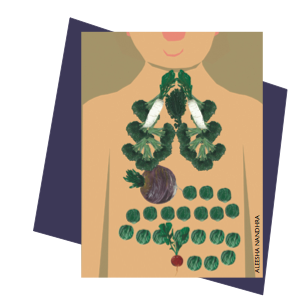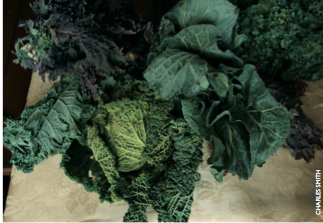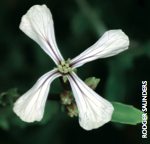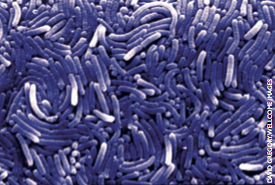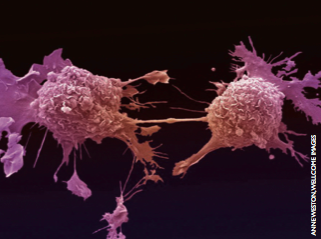FRIDAY, 16 MAY 2014
It is an accepted wisdom that a diet rich in vegetables is good for us. Many chemicals present in plants, such as those responsible for their colour, smell and flavour have been shown to be beneficial for our health. Examples include lycopene in tomatoes, B-carotene in carrots, resveratrol in the skin of red grapes and the antioxidant catechin in green tea. Many of these compounds cannot be synthesised by humans and therefore have to be sourced from our food intake. Some of these micronutrients, such as vitamins, have long been recognised to play a vital role in our health. But many other compounds, not yet considered essential, are likely to be beneficial. These are commonly referred to as phytochemicals.Scientists have identified thousands of phytochemicals, but few have been studied closely. Due to the complexity of the biochemical processes in which these compounds are involved, it has been difficult for researchers to find out which phytochemicals may help fight specific diseases, which have no effect and which may be harmful. Despite these uncertainties, the Western world has become increasingly fascinated by the purported health-promoting properties of so- called ‘superfoods’. Is the term ‘superfood’ a mere marketing tool? Although scientists often dispute the alleged health benefits of certain foodstuffs, sales of products like blueberries have soared in recent years. To protect consumers from misleading marketing claims, in 2007 the European Union banned the use of the term ‘superfood’ in food packaging unless accompanied by credible scientific research. However, emerging evidence about two different groups of phytochemicals found in dark green vegetables may justify the inclusion of these plants in the ‘superfood’ category.
Most dark green vegetables consumed by humans belong to the family Brassicaceae, also known as cruciferous vegetables due to the characteristic shape of their flowers. The four petals resemble a cross (Cruciferae, Latin for cross-bearing). This family includes widely cultivated vegetables such as broccoli, Brussels sprouts, cabbage, cauliflower, kale, turnip and watercress. Scientific interest in crucifers has increased with the finding that isothiocyanates and indole-3-carbinol, unique phytochemicals present at high levels in these plants, have the potential to prevent a wide range of cancers and multiple inflammatory disorders.
The pungent taste of some cruciferous vegetables, such as Brussels sprouts, is due to the presence of isothiocyanates. Natural isothiocyanates are produced by specialised cells in these plants upon tissue damage as a defence mechanism against herbivores and pathogens. The potential benefits of these compounds for human health were first shown by studies performed on rodents during the 1960s and 1970s. In a seminal publication in 1977, Wattenberg found that they reduce the impact of exposure to cancer-inducing chemicals. In the following year, an epidemiological study in humans found that individuals who consume fewer cruciferous vegetables have an increased risk of developing colon cancer. Finally, a third study showed that isotiocyanates prevent rodent models who had been genetically predisposed to cancer from developing tumours. Furthermore, this protection is not organ-specific and has been observed in the lung, oesophagus, stomach, colon, mammary gland, bladder, pancreas and skin.
Attempts to understand the mechanism of action of isothiocyanates began in parallel with studies demonstrating their protective effect in animals. It is now clear that there are multiple mechanisms, including stimulation of toxin- metabolising enzymes, induction of apoptosis (the process of programmed cell death), and antioxidant and anti-inflammatory activities. Multiple clinical studies have shown that the stimulation of toxin-metabolising enzymes by isothiocyanates ultimately lowers the levels of dangerous substances capable of mutating DNA, thus helping to lower the occurrence of cancerous cells. This detoxification process is particularly relevant in the protection against environmental pollutants. In the advent of cancer, the ability of isothiocyanates to induce apoptosis helps to reduce tumour growth. However, the benefits of these phytochemicals do not apply exclusively to cancer. Oxidative stress and chronic inflammation can lead to the development of multiple diseases. Indeed, the protective effects of isothiocyanates have been demonstrated in rodent models of cardiovascular and kidney diseases in models of nervous tissue injury and neurodegeneration, and in restoration of skin integrity. These compounds also help humans infected with Helicobacter pylori to reduce stomach colonisation by this bacterium, which is strongly associated with the development of gastric cancer.
There is now a wealth of evidence regarding the health benefits of isothiocyanates. Unlike most pharmacological agents that usually affect single targets, isothiocyanates have multiple targets. It is this ability to induce versatile and long-lasting responses that makes these unique phytochemicals exceptional protective agents. While isothiocyanates help to protect against the onset of disease, other phytochemicals present in cruciferous vegetables may contribute directly to maintaining the normal function of the human body. An example would be indole-3-carbinol, as demonstrated by the work of Marc Veldhoen and his team at the Babraham Institute, in Cambridge.
The surfaces of our body organs, especially the intestines, are colonised with a large variety of bacteria. Although many are beneficial, the intestine still needs protection against excessive epithelial invasion by these and other microorganisms. Underneath the layer of epithelial cells that form the internal surface of the intestine, there is a network of specialised immune cells. These cells, called intraepithelial lymphocytes, play a fundamental role in protecting the intestine against infection and excessive inflammation. Intraepithelial lymphocytes express high levels of a specific receptor: the aryl hydrocarbon receptor (AhR). It was known that AhR signalling is required for the normal function of these cells but until recently the molecules recognised by AhR were unknown.
Through a series of experiments performed on mice, Veldhoen and his team showed that the molecules that bind AhR, derive predominantly from dietary phytochemicals. The researchers manipulated the diets of mice, switching them to a synthetic feed lacking ingredients of vegetable origin. The altered diet led to a decrease in the numbers of intraepithelial lymphocytes in the intestines, which enhanced susceptibility to damage and increased numbers of harmful bacteria. However, when the diet was supplemented with indole-3-carbinol, these alterations were essentially reversed. Thus, the team concluded that plant-derived dietary compounds, such as indole-3-carbinol, promote normal immune function in the intestine.
The studies described here significantly expand our understanding of how diet impacts our well- being, showing that plant-derived nutrients can shape our capacity to fight disease. Nonetheless, some questions remain unanswered. For example, in comparison with human dietary exposures, many animal studies use relatively high doses of isolated phytochemicals. So it is not yet possible to recommend a particular ‘human dose’. Clinical trials are underway to evaluate the toxicity and potential side-effects of these isolated compounds in humans. Nevertheless, if you were reluctant to introduce cruciferous vegetables into your diet, these thoughts should provide you with enough encouragement to eat your greens. These ‘super’ veggies may help you fight off chronic diseases and keep your intestines healthy!
Ricardo Milho is a post-doctoral researcher at the Department of Pathology
